 Tila figures widely in Hindu religious symbolism. A hymn of Sant Kabīr suggests that God is inherently present in a human being like the oil in tiny sesamum seeds. The third eye in the subtle body of man between and behind the eyebrows is called tīsra-tila. Many astrological remedies to ward off the baneful influence of malefic stars involve the use of this holy grain.
Traditionally believed to have oozed out of the body of Lord Vishnu or his incarnation, Lord Krishna or the sweat of Kama, the cupid of Hindu mythology, tila belonging to the family Pedaliaceae and available in three varieties white, red and black has been used in India since the Indus-Saraswati civilization. It is included in Pancha-dhanya and Sapta-dhanya, ancient groups of five and seven food-grains respectively. The Atharvaveda describes tila as food along with rice and barley which can make one shine like a jewel. The Yajurveda prays for a bounty of sesamum and other grains. The Vishnu Purana alludes to its need and sanctity. Kautilya in the Arthashastra (Book II) refers to its cultivation and use. The oil-man is called tailika (from tila) in the Mahabharata.
Tila figures widely in Hindu religious symbolism. A hymn of Sant Kabīr suggests that God is inherently present in a human being like the oil in tiny sesamum seeds. The third eye in the subtle body of man between and behind the eyebrows is called tīsra-tila. Many astrological remedies to ward off the baneful influence of malefic stars involve the use of this holy grain.
Traditionally believed to have oozed out of the body of Lord Vishnu or his incarnation, Lord Krishna or the sweat of Kama, the cupid of Hindu mythology, tila belonging to the family Pedaliaceae and available in three varieties white, red and black has been used in India since the Indus-Saraswati civilization. It is included in Pancha-dhanya and Sapta-dhanya, ancient groups of five and seven food-grains respectively. The Atharvaveda describes tila as food along with rice and barley which can make one shine like a jewel. The Yajurveda prays for a bounty of sesamum and other grains. The Vishnu Purana alludes to its need and sanctity. Kautilya in the Arthashastra (Book II) refers to its cultivation and use. The oil-man is called tailika (from tila) in the Mahabharata.
Tila is used extensively in a number of religious rites and ceremonies. It is an essential ingredient of havana-samagrī offered to the fire-god during yajna its fumes are disinfectant. It is also included in the sacrificial material used in the rites of Ashtakas (falling on the 8th day of the four dark fortnights of Hemanta and Shishira)  which are sacred to gods and manes. The Grihya Sutras (Vaikhayana, for example) prescribe its use in the New Moon and Full Moon sacrifices, in rites of cremation and in ceremonies performed in honour of the departed spirits of dead relatives (shraddha). Tila is sprinkled on the face of a dead person or put in his mouth in combination with honey, coagulated milk, sweet milk and un-husked rice. Tila-tandulakam, a mixture of tila and rice, is sometime put in an earthen pot and placed near the corpse in the hope that it will reach the dead in the other world. A handful of tila is customarily thrown in the funeral pyre by some communities. Tila-tarpana ritual during a shraddha involves the propitiation of ancestors through the offerings of water and tila.
which are sacred to gods and manes. The Grihya Sutras (Vaikhayana, for example) prescribe its use in the New Moon and Full Moon sacrifices, in rites of cremation and in ceremonies performed in honour of the departed spirits of dead relatives (shraddha). Tila is sprinkled on the face of a dead person or put in his mouth in combination with honey, coagulated milk, sweet milk and un-husked rice. Tila-tandulakam, a mixture of tila and rice, is sometime put in an earthen pot and placed near the corpse in the hope that it will reach the dead in the other world. A handful of tila is customarily thrown in the funeral pyre by some communities. Tila-tarpana ritual during a shraddha involves the propitiation of ancestors through the offerings of water and tila.
 served to at least five married women for prosperity. Tila-dana is also made on Shattila Ekadashī and Magha Krishna Tila Dvadashī falling on 11th and 12th day respectively of the dark half of Magha (January-February).
served to at least five married women for prosperity. Tila-dana is also made on Shattila Ekadashī and Magha Krishna Tila Dvadashī falling on 11th and 12th day respectively of the dark half of Magha (January-February).





 Dec 2024
Dec 2024
 May 2024
May 2024
 September 2022
September 2022
 April 2022
April 2022
 October 2020
October 2020
 Jan 2020
Jan 2020
 June 2019
June 2019
 January-February 2019
January-February 2019
 Augest-September
Augest-September
 April 2018
April 2018
 November 2017
November 2017
 June 2017
June 2017
 November 2016
November 2016
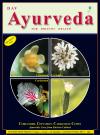 September 2015
September 2015
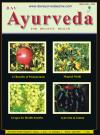 March 2015
March 2015
 July 2014
July 2014
 January 2014
January 2014
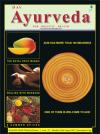 July2013
July2013
 March 2013
March 2013
 May 2012
May 2012
 May 2011
May 2011
 Sep 2010
Sep 2010
 Jun 2010
Jun 2010
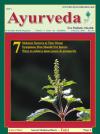 Feb 2010
Feb 2010
 December 2009
December 2009
 August 2009
August 2009
 June 2009
June 2009
 Feb 2009
Feb 2009
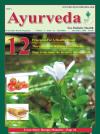 December 2008
December 2008
 October 2008
October 2008
 March 2008
March 2008
 July 2008
July 2008
 May 2008
May 2008